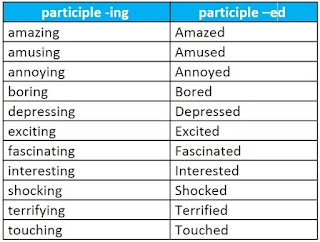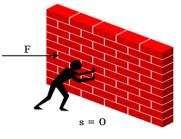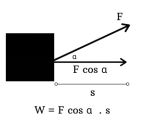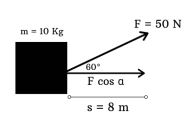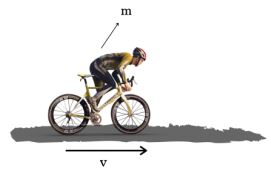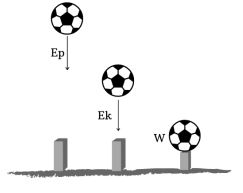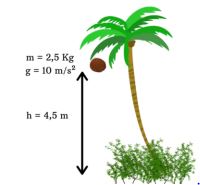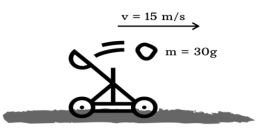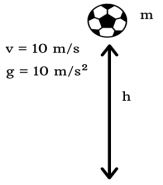Exploring Movie Reviews
Objectives
Understanding the meaning (function), form, and use of the adjective based on its context.
Learn about it!
In this lesson, you will learn about how to understand the Definition, Generic structure, social function, meaning, form, and use of adjectives, especially for a movie review.
1. What is a review text?
1. Definition
The review is one of the text genres. This classification of text types is commonly based on the structure used by the writer to compose his text. Each text type will have a different form of generic structure. As I said in my previous post, review text usually has a generic structure as:
2. Generic Structure
Introduction: it is the highlight of the general description of what will be reviewed. It can be the product, services that want to be sold, or just a site which wants to be known publicly. Then it will drive more traffic into the site.
Evaluation: the second phase is coming inside into the product in detail. It states the parts, uniqueness, quality of the product which will be known publicly. However, too much detail description will “teach” the will-buyer and it does not sound good. Evaluating as far as necessary for the targeted buyer is more genuine. The term evaluation will not be far from simple words of good or bad. In this phase reviewer will apply much evaluative word, valuable, useful, worthy, etc.
Interpretation: after writing about the objective thing of the product, it is the time for the reviewer to write about what he thinks or impresses on the product. Of course, this phase can be done after getting enough evaluation of the product. It is a personal idea about the product. Frequently to support and strengthen his idea or impression, a reviewer describes a comparison to other similar products. He states in which side the product has added value or honestly admitted that the product lacks value in a certain side.
Summary: this phase is recommending the conclusion for the reader of the product. After a clear explanation, a reviewer will make a final comment on whether the product is valuable or not for the targeted buyer. This phase is the worth of the review for the reader.
3. Dominant Language features:
1. Focus on specific participants
2. Using adjectives
3. Using long and complex clauses
4. Using metaphor
4. Examples and structures of the text
Harry Potter: Order of the Phoenix |
Pengenalan / Orientasi | I absolutely love the Harry Potter series, and all of the books will always hold a special place in my heart. |
Evaluasi 1 | I have to say that of all of the books, however, this was not my favorite. |
Evaluasi 2 | When the series began it was as much of a "feel good" experience as a huge mug of hot cocoa. The stories were bright, fast-paced, intriguing, and ultimately satisfying. |
Tafsiran (Interpretative recount) | Order of the Phoenix is a different kind of book. In some instances this works...you feel a whole new level of intensity and excitement by the time you get to the end. I was truly moved by the last page. Other times the book just has a slightly dreary, depressing feel. The galloping pace of the other books has slowed to a trot here, and parts of it do seem long, as if we're reading all about Harry "just hanging out" instead of having his usual adventures. Reading in detail about Harry cleaning up an old house, for example - housekeeping is still housekeeping, magical or no, and I'm not very interested in doing it or reading about other people doing it. A few other changes in this book - the "real" world comes much more in to play rather than the fantasy universe of the previous books, and Harry has apparently been taken off his meds. I know that he had a lot to be grumpy in this book, especially with being a teenager and all, but the sudden change in his character seemed too drastic. He goes from being a warm-hearted, considerate person to someone who will bite his best friend's heads off over nothing. It just seemed like it didn't fit with his character, like he turned into a walking cliché of the "angry teen" overnight. |
Rangkuman | The "real" story seemed to happen in the last 1/3 of the book, and this part I loved. I actually liked the ending (and yes, I cried!) as sad as it was. It packed a punch and it made me care about the story even more. Still a really good book, with some editing it would have been great. |
2. The function of adjectives in movie review
Have you ever written a movie review? Do you know what you should put into a movie review? In writing a movie review, you do not only need to pay attention to its generic structures, but also its language features such as using persuasive language, present tense, adjective, and complex sentences. However, in this lesson, you will only focus on how to use an adjective in writing a movie review. Using proper adjectives in a movie review is important to make a judgment. The adjectives describe the movie whether it is recommended or not.
3. The forms of Adjectives
An adjective is a word that modifies the noun or a pronoun. It is put after the linking verb (auxiliary). For example:
The movie is amazing.
- Noun: The movie
- Auxiliary: is
- Adjectives: amazing
I am amazed.
- Pronoun: I (the movie)
- Auxiliary: am
- Adjectives: amazed
The examples above show that the adjective “amazing” and "amazed" modify the noun and pronoun “the movie" and "I". The adjective is put after auxiliary “is” and"am". See another example below:
- Her character as a writer was interesting.
- I am interested in her character as a writer in that movie.
Have you identified the difference between the first and the second sentences above? Well, the sentences above have two meaning; an active meaning and a passive meaning. The word “interesting” and “interested” are from “interest”, but when you put participle –ing and –ed to make an adjective, the meaning changes.
- Her character as a writer was interesting. (It means that the character as a writer interests you)
When you put participle –ing, the adjective has an active meaning.
- I am interested in her character as a writer in that movie. (It means that you have an interest or feel interested in the character.)
But, when you put participle –ed, the adjective has a passive meaning.
Look at the table below to see another adjective with participle -ing and -ed.
To make an adjective has a stronger meaning you can use words such as very, really, absolutely, and extremely.
Those words are called as ***intensifier*. For examples:
- It must be a really great movie
- They were extremely excited in watching that movie
- I think this movie won’t disappoint you. It is absolutely touching, witty, deep, and refreshing.
4. The use of adjectives
Adjectives are commonly placed after to be (am, are, is, was, were). However, there are some other verbs that can be followed by adjectives.
To understand how to use the words above, read the following sentences:
The director is genius in making the high quality 3D movie.
The director seems genius in making the high quality 3D movie.
She is very amazed at the story in the movie.
She feels very amazed with the story in the movie.
They feel so sleepy while watching because the movie is boring.
They feel so sleepy while watching because the movie feels boring.
After reading the explanation about form and meaning of the adjective. Now, try to understand how to use the adjective in a movie review both orally and written. Here are the examples of using adjectives in a movie review.
Do you understand?
Example of conversation:
Keyla : Have you watched ‘Letters to Juliet’ movie?
Rizal : No. What kind of movie is it?
Keyla : It is an amazing drama movie.
Rizal : What is it about?
Keyla : It tells about an old lady looks for her past boyfriend then they meet after 50 years because of letter to Juliet.
Example of text:
‘Letters to Juliet’ is an amazing movie. I absolutely loved it. It is extremely amusing because providing a lot of beautiful places in Verona, Italy. The story is also romantic and touching. You won’t regret it.'
